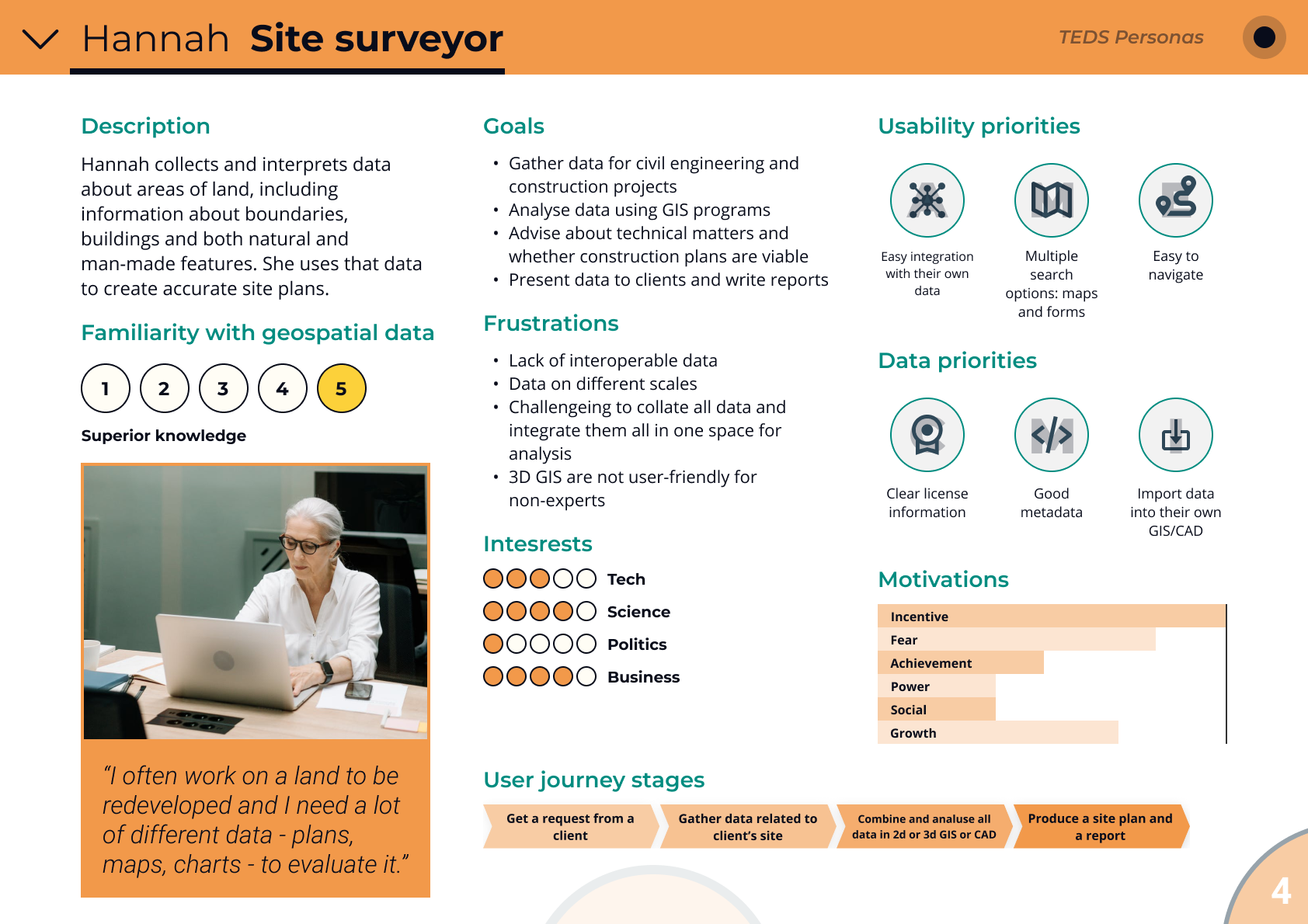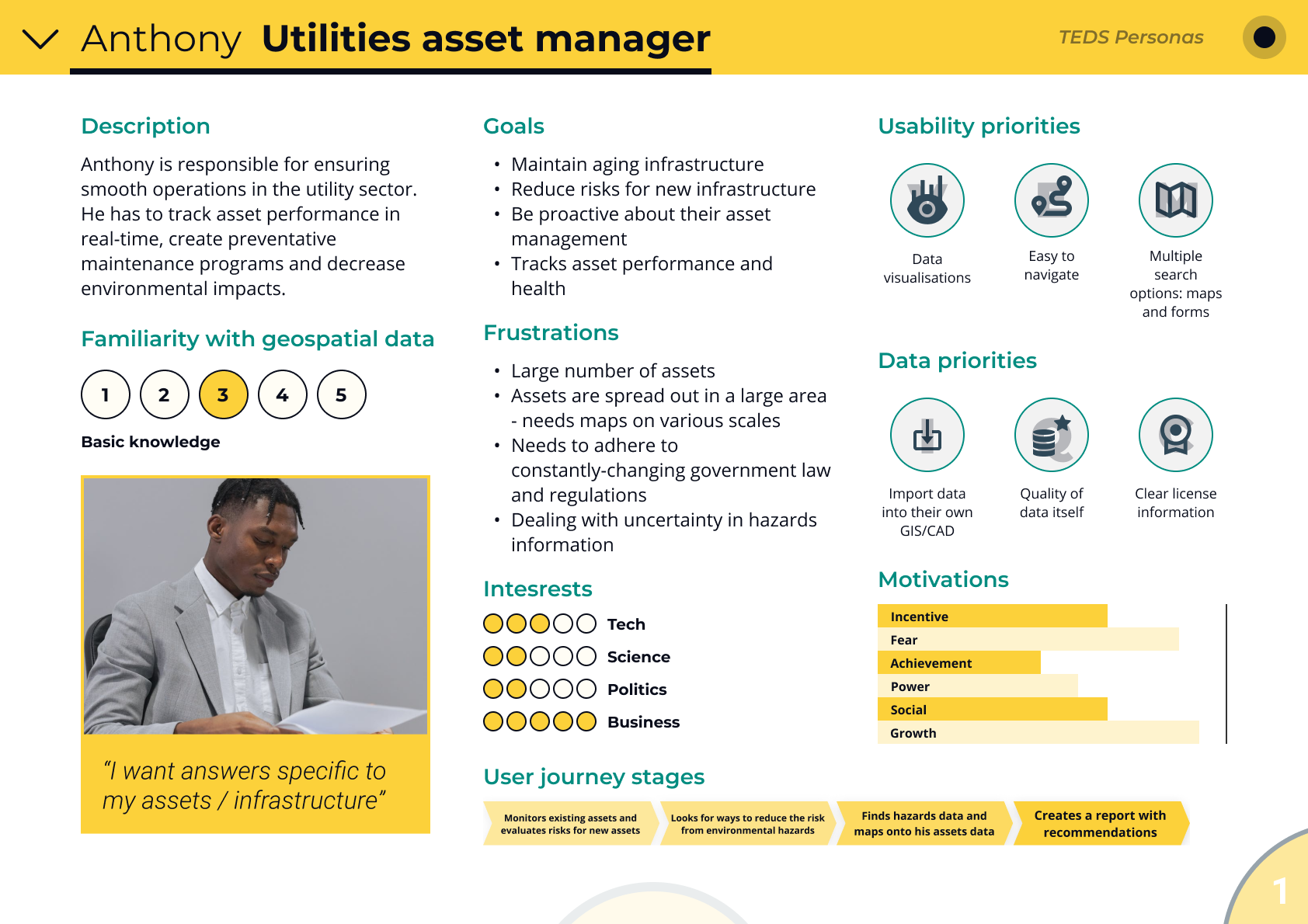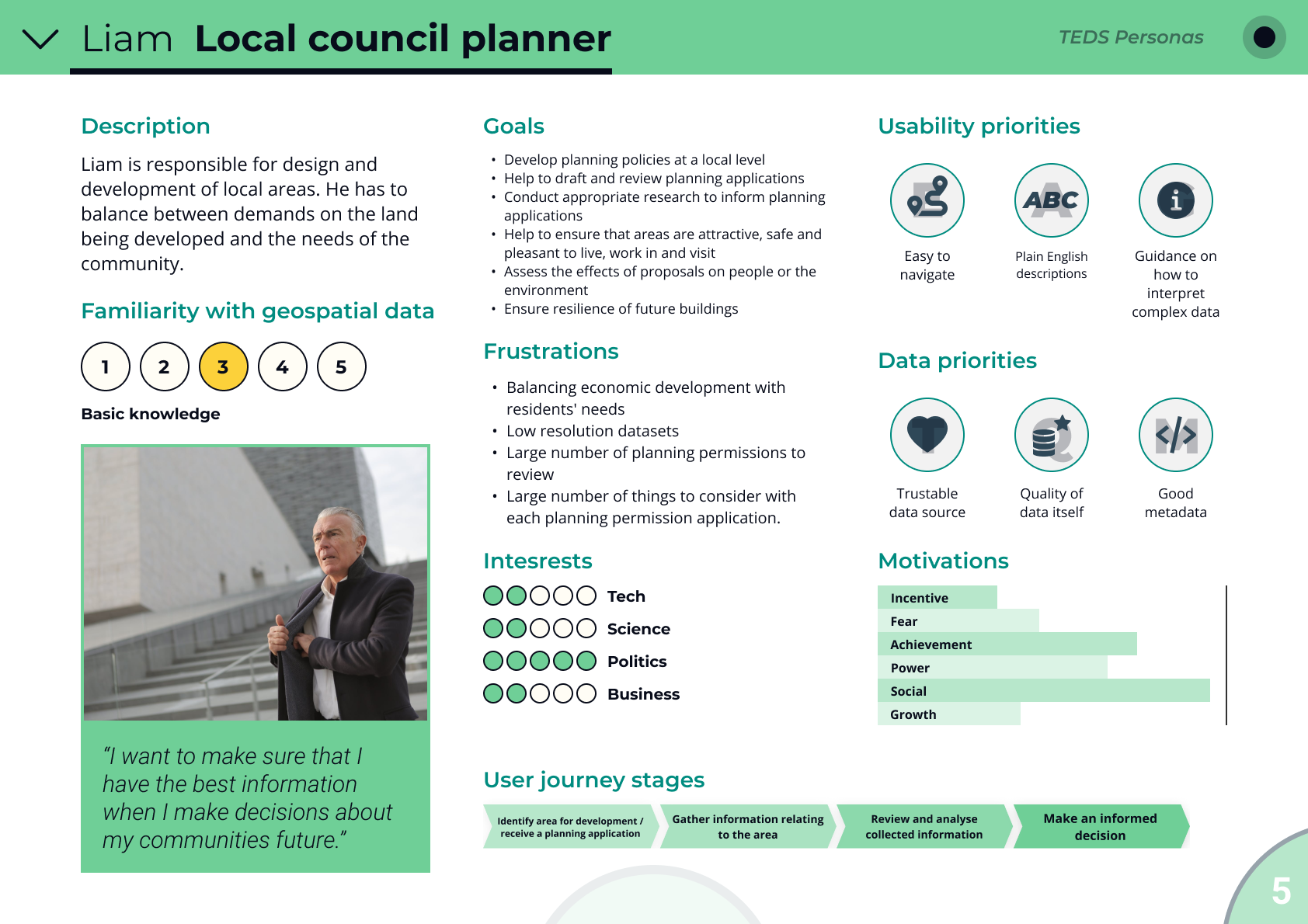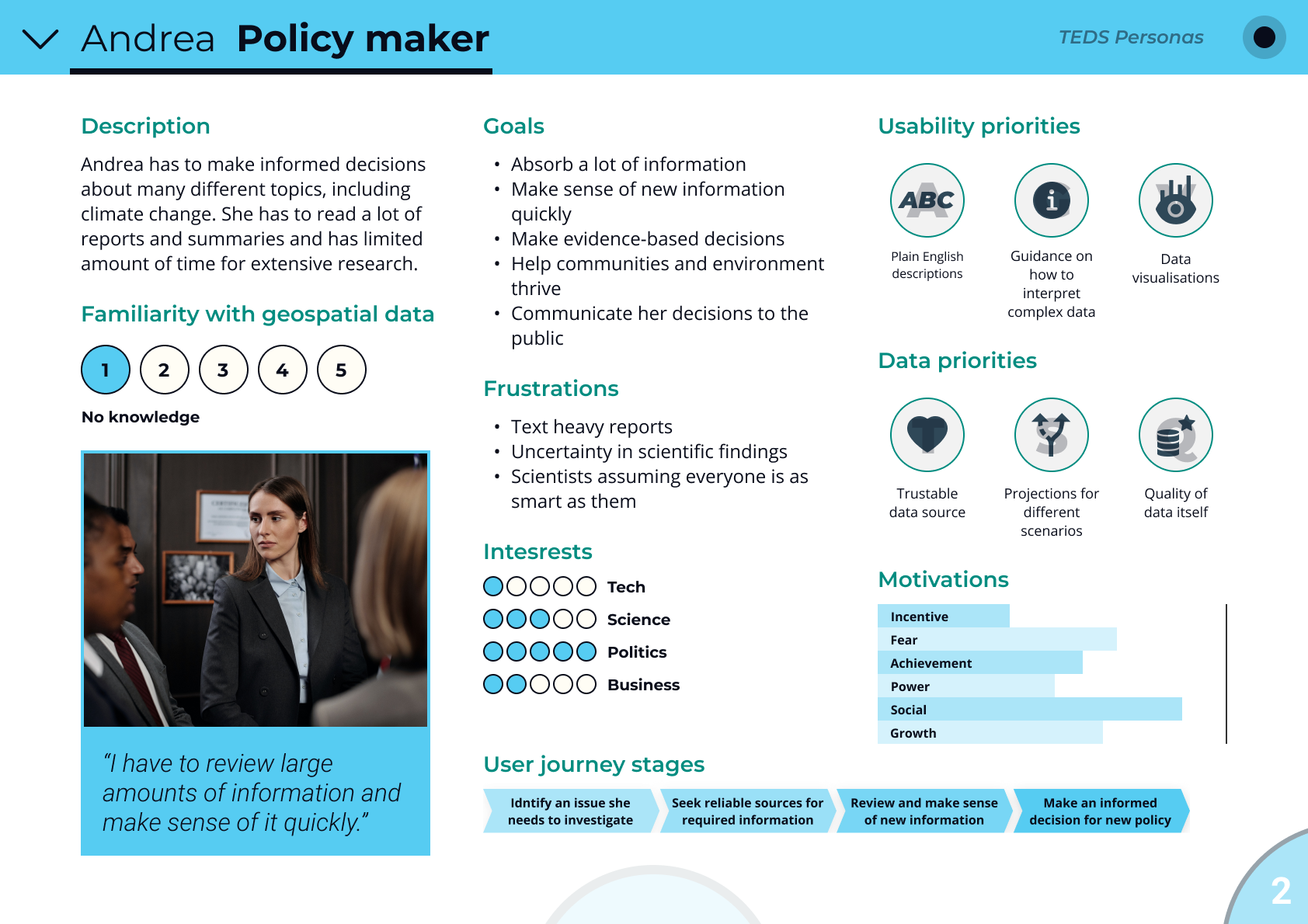Personas in product design
Personas are representations of user groups whom we expect to use our products. They help to convey information about the users to the product team. Some products target just a single user group, but most will have more than one.

Effective use of personas
Personas ideally should be created based on qualitative or quantitative research. Personas can help you:
- Increase empathy and interest toward users
- Guide product design decisions
- Prioritize features (“Will this feature address the needs of our most important persona?”)
- Mock test the product (“Would Persona A be able to use this feature?”)
How to create and use personas
Personas can be created individually or as a group effort. You can start by answering the following questions:
- Who are the primary users of our products? (e.g.: data scientist, policy maker, insurance provider, etc.)
- What are current behaviour patterns of each user group?
- What other information about them is relevant? (e.g: Goals, Frustrations, Common behaviours, science/technology knowledge level)
- What is the context or circumstances in which this persona will use our product?
To ensure that personas are effective and useful:
- Share them
- Reference them when creating user journeys
- Create usability tests that are targeted at specific personas
If you are working with sensitive data or information consider creating anti-personas as well. Anti-personas are groups of people who might try to misuse your product or service.
Examples
Below you can find some persona examples showing different types of user groups which could benefit from environmental data and services. They show how familiar each groups is with geospatial data and what are their goals, priorities and frustrations. These personas helped us to present research findings in a more digestible form and to keep user needs and frustrations at the forefront when thinking about new environmental data products and services that could benefit them.




Resources
More details about the personas and user needs can be found here.
To start creating your own personas, you can use one of these templates:
comments